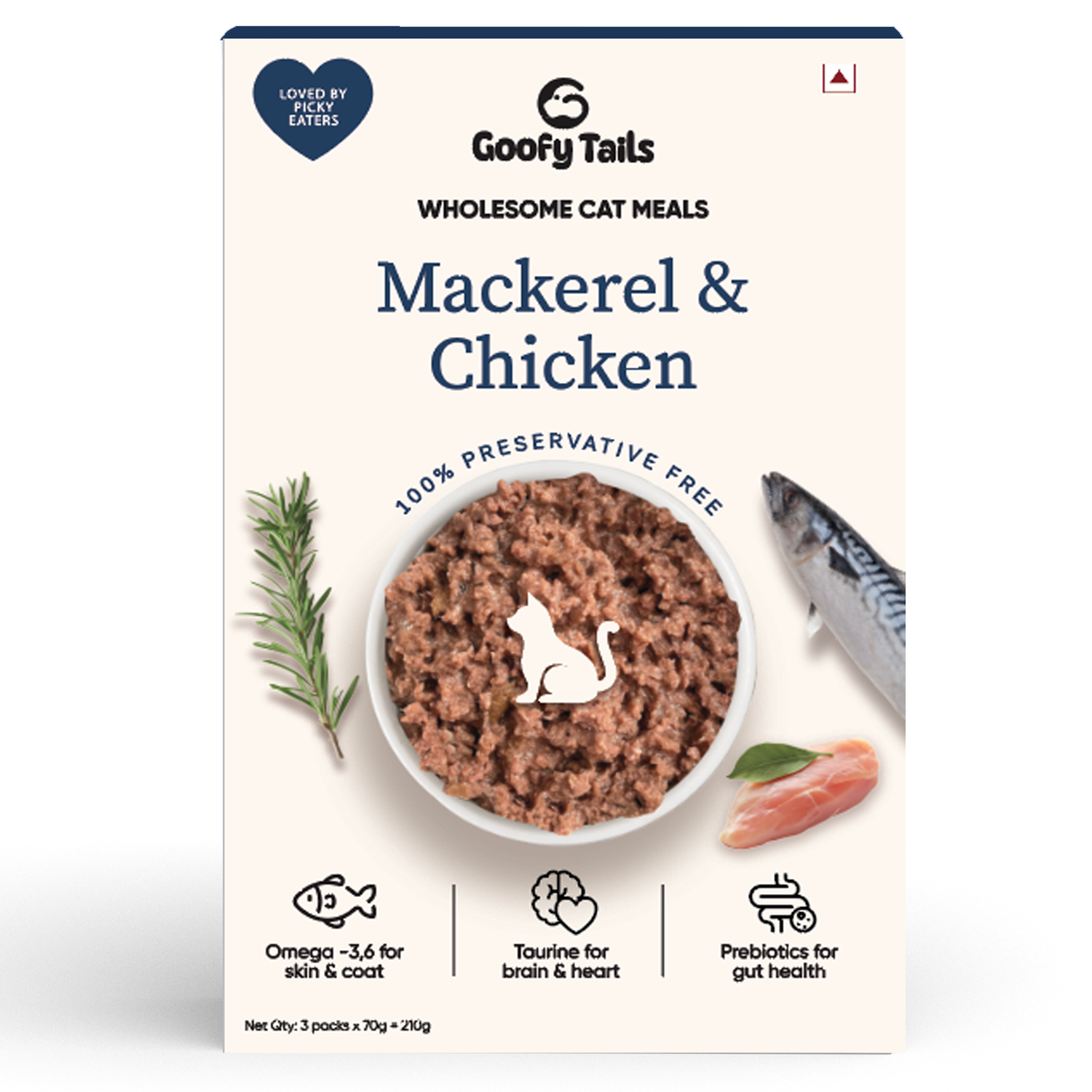Grain-Free vs. Gluten-Free Diets for Dogs: Understanding the Difference, Benefits, and Best Practices
The pet nutrition landscape has evolved rapidly over the last decade, with dog parents increasingly prioritising digestive health, ingredient transparency, and species-appropriate diets. Amid this shift, two terms have become buzzwords on food labels: grain-free and gluten-free. While they may sound similar, the differences are critical, and understanding them can help dog parents make informed, responsible dietary decisions for their pets.
This article aims to clarify the definitions, purposes, and implications of both grain-free and gluten-free diets for dogs, drawing from veterinary science, evolutionary biology, and practical feeding strategies.

Defining the Basics: What is Grain-Free and What is Gluten-Free?
What is a Grain-Free Diet?
As discussed in the article “The Science Behind Grain-Free Dog Food: What Every Pet Parent Should Know”, a grain-free diet excludes all grains from the ingredient list. This includes both gluten-containing grains, such as wheat, barley, and rye, and gluten-free grains, including rice, oats, corn, and millet.
In grain-free dog food, the carbohydrate sources are typically replaced with alternatives such as:
-
Sweet potatoes
-
Peas
-
Pumpkin
-
Eggs
-
Spinach
Grain-free diets are popular for being lower in carbohydrates and higher in animal protein and fat, which many argue better mirrors a dog’s ancestral eating patterns.
What is a Gluten-Free Diet?
A gluten-free diet eliminates only the gluten-containing grains: wheat, barley, and rye. Gluten is a protein that can cause immune reactions in sensitive individuals, both human and canine.
However, gluten-free dog food may still contain grains that do not contain gluten, such as:
-
Rice
-
Corn
-
Oats (if certified gluten-free)
-
Sorghum
-
Buckwheat
-
Quinoa
In essence, all grain-free diets are gluten-free, but not all gluten-free diets are grain-free.
Why is Gluten-Free Important by Default?
Many veterinarians recommend gluten-free diets as a baseline, especially for dogs with:
-
Chronic diarrhoea or gastrointestinal issues
-
Suspected food allergies or sensitivities
-
Autoimmune or inflammatory conditions
-
Skin problems such as rashes, itching, or ear infections
Even dogs without clear symptoms may benefit from eliminating gluten, simply because:
-
Gluten can be difficult to digest
-
It may contribute to low-grade inflammation over time
-
The grains containing gluten (wheat, especially) are often highly processed or genetically modified
Gluten intolerance in dogs is not widespread, but it is underdiagnosed. Symptoms often overlap with other health issues, making it difficult to pinpoint without an elimination diet or formal testing.

Advantages of Grain-Free Over Gluten-Free Diets
While gluten-free helps eliminate a potential irritant, grain-free goes a step further, addressing the broader nutritional needs and metabolic tendencies of dogs.
-
Better Carb-to-Protein Ratio
Grain-free diets are typically lower in starch and higher in protein—a shift that:
-
Supports lean muscle mass
-
Improves satiety and energy regulation
-
Helps prevent blood sugar spikes and crashes
In contrast, many gluten-free foods still use rice, corn, or millet, which are high in glycemic load. These may contribute to obesity or metabolic disorders, especially in sedentary or senior dogs.
-
Ancestral Alignment
Dogs, though domesticated, are genetically predisposed to thrive on a meat-first diet. Grain-free foods often mimic the macronutrient profile of ancestral canine diets:
-
70–80% animal protein
-
Moderate fats from meat and omega sources
-
Minimal carbs from plant-based fibre or root vegetables
This approach supports biological appropriateness—feeding dogs what their bodies are naturally equipped to handle.
-
Improved Digestibility
Grains—especially when processed—can be tough on a dog’s gut. Grain-free diets tend to use digestible ingredients such as:
-
Chicken, lamb, fish
-
Pumpkin and sweet potato (low allergen, high fibre)
-
Coconut oil, flaxseed oil (healthy fats)
This makes them ideal for dogs with:
-
IBD (Inflammatory Bowel Disease)
-
Loose stool or constipation
-
Frequent bloating or flatulence
-
Cleaner Ingredient Panels
Grain-free diets are often free from fillers and by-products. Instead of wheat middlings or corn gluten meal, they focus on:
-
Real meat as the first ingredient
-
Herbs like rosemary or turmeric for immunity
-
Functional superfoods for digestion and skin health
-
Goofy Tails’ grain-free meals, for example, feature:
-
Chicken & Herbs (chicken, liver, flaxseed oil, moringa)
-
Lamb & Rosemary (lamb, liver, herbs, coconut oil)
-
Buff & Berry (buffalo, cranberries, pumpkin, carrots)
These recipes eliminate unnecessary starches while preserving hydration and palatability.
When Should You Choose Grain-Free for Your Dog?
Grain-free is not always necessary, but in certain situations, it can significantly improve your dog’s health. You should consider a grain-free diet if your dog shows:
-
Chronic Digestive Issues
-
Intermittent vomiting ordiarrhoeaa
-
Sensitive stomach
-
Poor stool quality
-
Gas or bloating
-
Skin & Coat Problems
-
Constant itching or licking
-
Ear infections
-
Hair loss or a dull coat
-
Weight Management Concerns
-
Overweight dogs that don’t respond well to calorie reduction
-
Dogs prone to lethargy or sudden energy dips
-
Suspected Food Allergies
-
Grains are among the top 5 allergens in dogs. If a dog shows adverse reactions, shifting to a single-protein, grain-free formula can help isolate the cause.
-
Puppies or Senior Dogs
-
Grain-free foods provide easily digestible nutrients, which are crucial when:
-
Puppies are still developing their gut flora and immunity
-
Seniors need higher protein and fat for muscle retention and cognition
Not All Grain-Free Diets Are Equal: What to Watch For
As with any category, the label “grain-free” is not a guarantee of quality. Some commercial grain-free foods rely heavily on:
-
Lentils or peas as bulk fillers
-
Synthetic vitamins rather than whole food sources
-
Unclear meat sourcing or processing
When feeding grain-free, make sure the diet also checks these boxes:
-
Meat as the First Ingredient
-
Look for named animal proteins like “chicken” or “buffalo,” not “meat meal” or “animal by-product.”
-
Clean Treats
-
Many dog parents forget to align their dog’s treats with their food. Avoid:
-
Biscuits made from wheat or corn
-
Chews with artificial preservatives or dyes
-
Instead, use:
-
Fresh vegetables like cucumber or zucchini
-
Dehydrated fish skin or jerky
-
Functional Additives
A good grain-free diet will contain more than just meat and veg. Look for:
-
Omega oils (flaxseed, fish oil)
-
Herbs (moringa, turmeric, rosemary)
-
Prebiotics and enzymes for gut health
Goofy Tails recipes do this well by including both nutrition and functionality in one meal.
Can You Cook Grain-Free at Home?
Absolutely—but it comes with responsibility. As detailed in the article “Homemade Grain-Free Dog Food: What to Feed & Safety Tips”, cooking homemade grain-free meals for dogs requires:
-
Balanced macro and micronutrients
-
Proper cooking methods (to break down anti-nutrients)
-
Veterinary input, especially for supplementation
Homemade recipes must include:
-
A protein source (chicken, lamb, turkey, or fish)
-
Cooked, digestible vegetables (pumpkin, spinach, carrots)
-
Healthy fats (coconut oil, fish oil)
-
A calcium source (eggshell powder or bone meal)
-
Optional supplements (taurine, zinc, probiotics)
Done right, homemade grain-free diets can be powerful. But if done without care, they can lead to:
-
Nutrient deficiencies (calcium, vitamin D, taurine)
-
Imbalanced phosphorus levels
-
Overreliance on one protein
Key Takeaways: Grain-Free vs Gluten-Free
|
Feature |
Gluten-Free |
Grain-Free |
|
Removes wheat, barley, rye? |
✅Yes |
✅Yes |
|
Removes rice, corn, oats? |
❌No |
✅Yes |
|
Improves digestion? |
Moderate |
High |
|
Reduces inflammation? |
Moderate |
High |
|
Higher protein & fat? |
Not always |
✅Yes |
|
Lower glycemic load? |
Not necessarily |
Often yes |
|
More ancestral? |
❌No |
✅Yes |
|
Requires clean treats, too? |
✅Yes |
✅Yes |
Conclusion
A gluten-free diet is a smart and safe starting point for most dogs—it eliminates potential triggers without a significant dietary overhaul. But a grain-free diet goes deeper, aligning with a dog’s natural biology and optimising protein, fat, and fibre intake.
Whether you choose commercial grain-free foods like Goofy Tails' thoughtfully curated meals or explore homemade options, the key lies in balanced nutrition, ingredient integrity, and consistency.
Don’t be swayed by marketing—read labels, rotate proteins, and choose clean, whole foods. And always remember: your dog’s body language, stool quality, energy level, and coat condition will tell you more than any packaging ever can.








Leave a comment